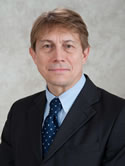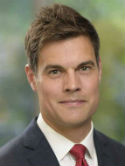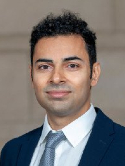Tandem reconstruction of the femoral diaphysis using an intercalary prosthesis and a fibular free flap Journal Article
| Authors: | Shahzad, F.; Christ, A. B.; Kim, L.; Levy, A. S.; Teven, C. M.; Fabbri, N.; Nelson, J. A.; Healey, J. H. |
| Article Title: | Tandem reconstruction of the femoral diaphysis using an intercalary prosthesis and a fibular free flap |
| Abstract: | Background: Femoral diaphyseal reconstructions with metal prostheses have mediocre results because of high mechanical forces that result in eventual implant failure. Biological alternatives require prolonged restrictions on weight-bearing and have high rates of infection, nonunion, and fracture. A novel method of utilizing a vascularized fibula in combination with an intercalary prosthesis was developed to complement the immediate stability of the prosthesis with the long-term biological fixation of a vascularized fibular graft. Methods: A prospectively maintained database was retrospectively reviewed to identify patients who underwent reconstruction of an oncological intercalary femoral defect using an intercalary prosthesis and an inline fibular free flap (FFF). They were compared with patients who underwent femoral reconstruction using an intercalary allograft and an FFF. Results: Femoral reconstruction with an intercalary metal prosthesis and an FFF was performed in 8 patients, and reconstruction with an allograft and an FFF was performed in 16 patients. The mean follow-up was 5.3 years and 8.5 years, respectively (p = 0.02). In the bioprosthetic group, radiographic union of the fibula occurred in 7 (88%) of 8 patients, whereas in the allograft group, 13 (81%) of 16 patients had allograft union (p = 1.00) and all 16 patients had fibular union (p = 0.33). The mean time to fibular union in the bioprosthetic group was 9.0 months, whereas in the allograft group, the mean time to allograft union was 15.3 months (p = 0.03) and the mean time to fibular union was 12.5 months (p = 0.42). Unrestricted weight-bearing occurred at a mean of 3.7 months in the prosthesis group and 16.5 months in the allograft group (p < 0.01). Complications were observed in 2 (25%) of 8 patients in the prosthesis group and in 13 (81%) of 16 patients in the allograft group (p = 0.02). Neither chemotherapy nor radiation affected fibular or allograft union rates. Musculoskeletal Tumor Society scores did not differ significantly between the groups (mean, 26 versus 28; p = 0.10). Conclusions: Bioprosthetic intercalary femoral reconstruction with a metal prosthesis and an FFF resulted in earlier weight-bearing, a shorter time to union, fewer operations needed for union, and lower complication rates than reconstruction with an allograft and an FFF. © 2023 BY THE JOURNAL OF BONE AND JOINT SURGERY, INCORPORATED. |
| Keywords: | osteosarcoma; adolescent; adult; child; school child; treatment outcome; aged; bone neoplasms; middle aged; bone graft; bone tumor; cancer surgery; bone transplantation; retrospective studies; young adult; chemotherapy; prospective study; deep vein thrombosis; pathology; transplantation; retrospective study; ewing sarcoma; lung embolism; length of stay; ischemia time; vein thrombosis; free tissue graft; perioperative complication; wound healing impairment; diaphysis; weight bearing; fibula; fibula graft; myxosarcoma; cimetidine; artificial limbs; free tissue flaps; procedures; reconstructive surgery; blood vessel shunt; ankle instability; humans; human; male; female; article; epithelioid hemangioma; fibular free flap; implant complication; femur diaphysis; diaphyses; deep femoral artery; distal tibiofibular syndesmosis; femoral osteotomy; girdlestone procedure; intercalary femoral reconstruction; knee stiffness; patella dislocation; tandem reconstruction; tibiofibular joint |
| Journal Title: | Journal of Bone and Joint Surgery |
| Volume: | 106 |
| Issue: | 5 |
| ISSN: | 0021-9355 |
| Publisher: | Journal of Bone and Joint Surgery |
| Date Published: | 2024-03-06 |
| Start Page: | 425 |
| End Page: | 434 |
| Language: | English |
| DOI: | 10.2106/jbjs.23.00211 |
| PUBMED: | 38127807 |
| PROVIDER: | scopus |
| PMCID: | PMC10932824 |
| DOI/URL: | |
| Notes: | The MSK Cancer Center Support Grant (P30 CA008748) is acknowledged in the PDF -- Corresponding author is MSK authors: Farooq Shahzad -- Source: Scopus |
Altmetric
Citation Impact
BMJ Impact Analytics
Related MSK Work








